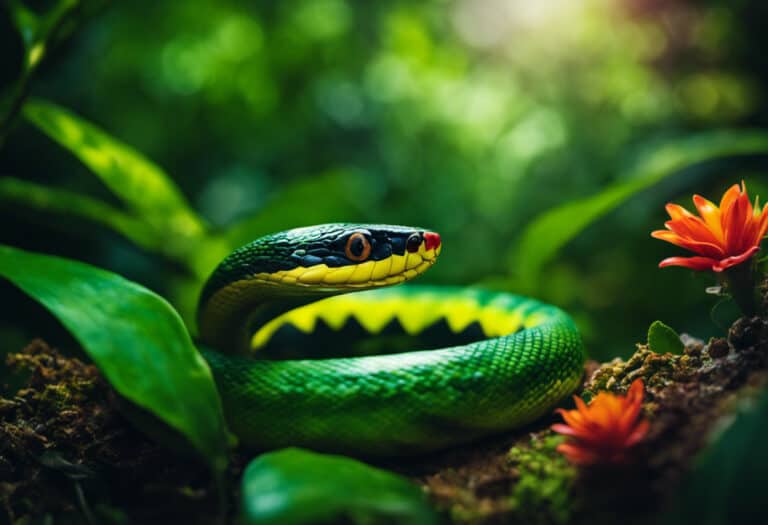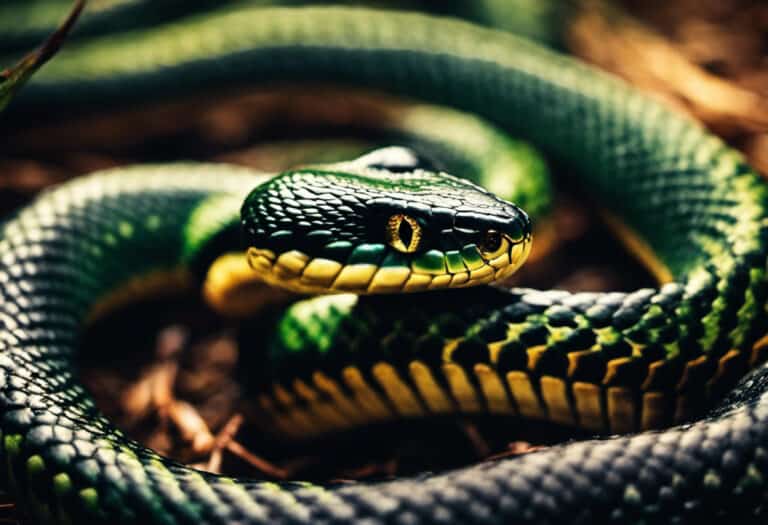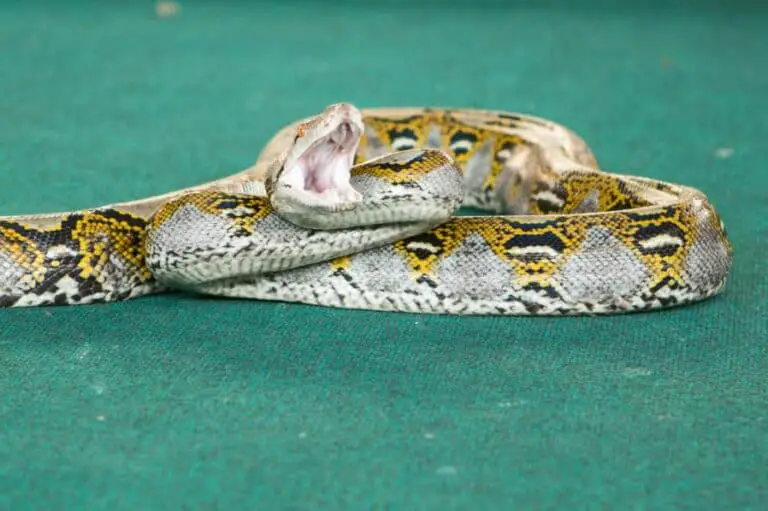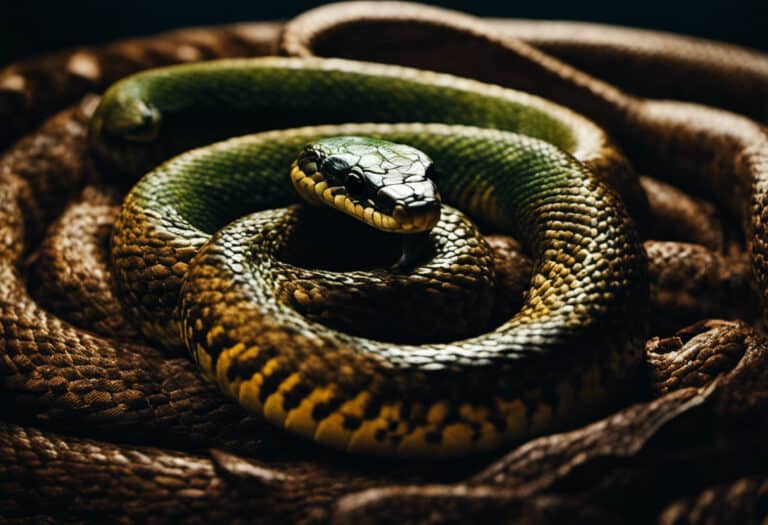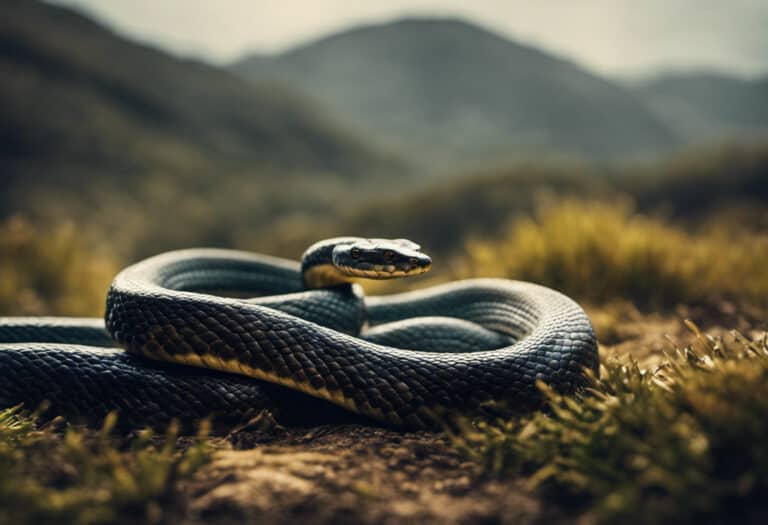Unraveling the Mysteries: How Far Does a Snake Travel Daily?
Snakes have long intrigued and captivated us with their unique abilities and adaptations. One question that often arises is how far these fascinating creatures travel on a daily basis. To shed light on this mystery, we will explore various sources and compile the relevant information.
Key Takeaways:
- Flying snakes can travel up to 10 times their body length through the air.
- Pythons move an average of 32.2m during daytime and 18.0m during night time hours.
- Snakes generally travel at 3-5 miles per hour.
- The specific distance a snake travels daily can vary depending on its species, habitat, and behavior.
Rattlesnakes in Colorado: Traveling through Diverse Habitats
Rattlesnakes, a prominent venomous snake species found in Colorado, are known for their distinctive rattling tail and heat-sensing organs. There are three species of rattlesnakes in Colorado: the Western Diamondback, Prairie Rattlesnake, and Midget Faded Rattlesnake. These snakes can be found in a variety of habitats, including rocky outcrops, prairies, and grasslands.
The Western Diamondback Rattlesnake is the largest of the species and can be found in the southern regions of Colorado. They prefer rocky areas and are often found near the base of shrubs or under rocks. The Prairie Rattlesnake is smaller and can be found in the eastern regions of the state. They prefer grasslands and have adapted to live in burrows. Finally, the Midget Faded Rattlesnake is the smallest of the three and can be found in the central regions of Colorado. They prefer rocky areas and have adapted to live in crevices.
All three species possess heat-sensing organs called pit organs that allow them to detect prey, even in darkness. When threatened, rattlesnakes will shake their tails, creating a distinctive rattle as a warning signal. While these snakes are venomous, they play an important role in Colorado’s ecosystem, controlling rodent populations and serving as prey for other animals.
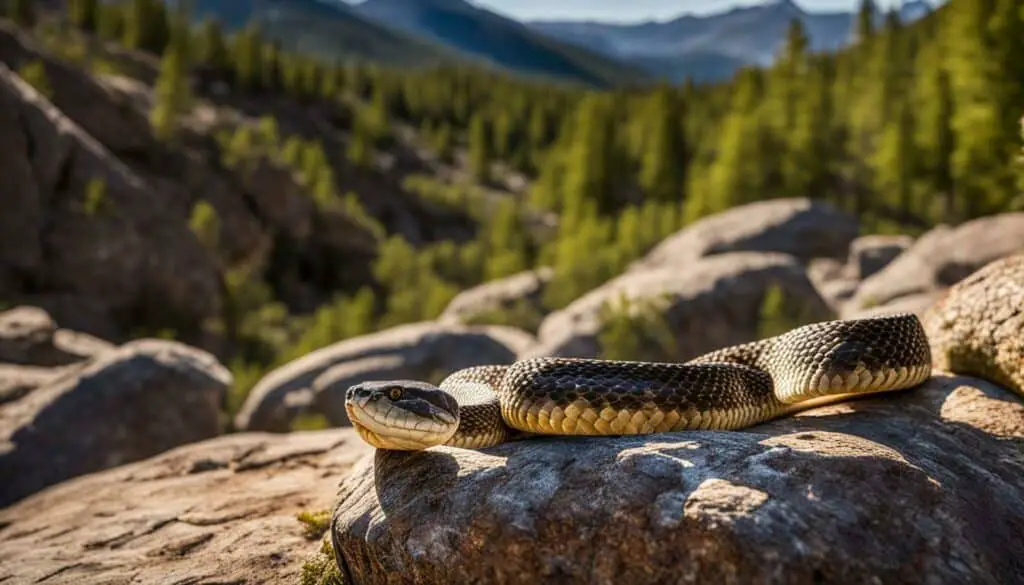
Rattlesnakes in Colorado: Traveling through Diverse Habitats
Rattlesnakes in Colorado have adapted to live in diverse habitats, including the rocky outcrops of the mountains, the grasslands of the eastern plains, and the prairies of the central regions. These habitats offer a varied landscape for the snakes to move through, and they have developed unique behaviors to navigate them. For example, rattlesnakes will often bask in the sun to warm up in cooler environments, such as at higher elevations. They may also use rock crevices as shelter during the hottest parts of the day.
While it can be concerning to encounter a rattlesnake in the wild, it’s important to remember that these snakes are an essential part of Colorado’s ecosystem. By understanding their behaviors and habitat preferences, you can take steps to avoid conflict and appreciate these fascinating creatures from a safe distance.
Exploring Colorado’s Venomous Snake Species
Colorado is home to various venomous snake species, each with their own unique characteristics and habitats. One of the most common venomous snakes found in the state is the rattlesnake. Another notable rattlesnake species in Colorado is the Prairie Rattlesnake. These snakes are known for their rattling tail and heat-sensing pit organs that allow them to detect prey and predators in their environment. The Western Diamondback Rattlesnake is another prominent species known for its dangerous venom.
While rattlesnakes are the most well-known venomous snakes in Colorado, there are also other species to consider. Copperheads and Massasaugas are relatively rare in the state; however, it is still important to understand their unique characteristics and behaviors. Copperheads have distinctive hourglass-shaped markings on their bodies, while Massasaugas have a round head and a rattle on their tails.
The colorful Coral Snake and the sidewinding Sidewinder are two exotic venomous snakes that can also be found in Colorado. Coral snakes are recognized by their red, yellow, and black bands, while Sidewinders have a unique sidewinding movement that allows them to move quickly through the sand.
Understanding venomous snake species’ habitats and behaviors is crucial for coexisting with them and appreciating their vital role in the ecosystem. Venomous snakes play an essential role in controlling rodent populations and maintaining balance in their natural habitats. It is important to remember to give these snakes space and respect them by not disturbing their natural habitats.
In the case of a venomous snake bite, it is essential to seek medical attention immediately. Snake venom can be very potent and may cause severe symptoms, including swelling, respiratory distress, and even death if left untreated. Understanding the characteristics and habits of venomous snakes in Colorado can help you take necessary precautions and appreciate the beauty and importance of these fascinating creatures.
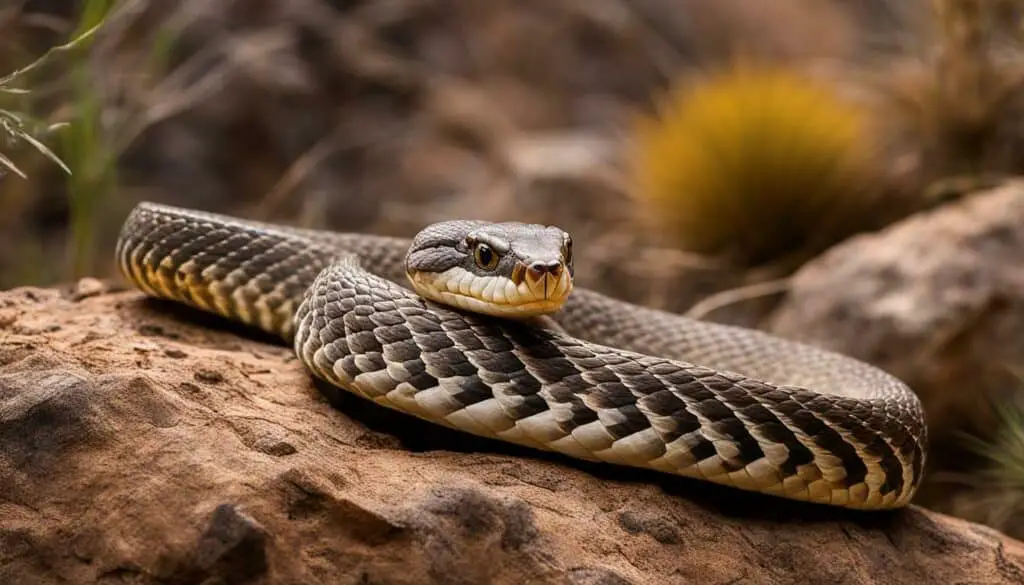
An Exotic Touch: Coral Snakes and Sidewinders in Colorado
The Coral Snake and the Sidewinder add a touch of exoticism to Colorado’s snake population. While rattlesnakes, copperheads, and massasaugas are more commonly found in the state, these two species have unique characteristics and adaptations that make them stand out.
The Coral Snake is known for its brightly colored bands of red, yellow, and black. The bands mimic those of the venomous King Snake, which helps protect the Coral Snake from potential predators. While its venom can be deadly, the Coral Snake is not aggressive and will only bite if provoked.
The Sidewinder, on the other hand, has adapted to sandy environments by moving sideways and using a unique method of locomotion. Instead of slithering like most snakes, the Sidewinder moves by pushing its body off the ground and into a looping motion. This technique allows it to traverse the shifting sands of its habitat more efficiently.
Despite their unique characteristics, both the Coral Snake and the Sidewinder are relatively rare in Colorado. However, if you are lucky enough to spot one of these exotic snakes in the wild, it is important to remember to keep a safe distance and let them continue on their way.
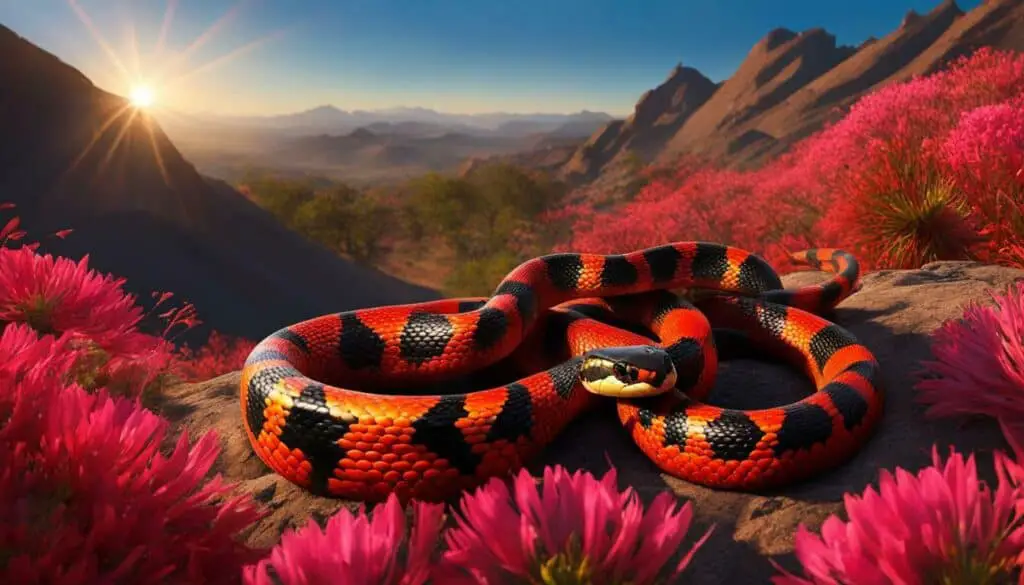
“Both the Coral Snake and the Sidewinder are fascinating examples of how snakes have adapted to their respective environments. While they may not be as common as other venomous species in Colorado, their presence adds an element of excitement and intrigue to any exploration of the state’s natural habitats.”
Determining Snake Travel Distance: Insights from Studies
Considering all these snake species and their respective characteristics, it is crucial to determine how far they travel daily. Studies have shed light on different snake species’ travel behaviors and their movements in their ecosystems.
One of the most unique findings from these studies is the gliding ability of flying snakes, allowing them to cover horizontal distances of up to 10 times their body length. While not directly related to travel distance, this trait highlights the incredible adaptations that snakes have developed to survive and thrive in their habitats.
GPS tracking studies have also provided valuable insights into the travel patterns of snakes. For instance, studies show that pythons can travel an average of 32.2 meters during the day and 18.0 meters at night. However, travel distance can vary widely, with some individuals covering as much as 621.0 meters or 566.0 meters during the day or night, respectively.
Measuring the speed of snakes in motion is challenging, as they tend to move their bodies from side to side for traction and rarely travel in straight lines. Despite this, it is estimated that snakes can travel at speeds of 3 to 5 miles per hour.
Migration is also an essential aspect of snake travel behavior. Some studies suggest that venomous snakes are migrating northward due to climate change-induced rising temperatures, leading to an increase in snakebite incidents in certain areas.
Overall, these insights highlight the importance of understanding snake travel behavior for both ecological and human safety purposes. By gaining a better understanding of their travel distances and patterns, we can coexist with these fascinating creatures and minimize potential conflicts.
![]()
In conclusion, gaining a better understanding of snake travel distances and patterns is crucial to mitigating potential conflicts and coexisting harmoniously with these fascinating creatures. The insights provided by studies on snake travel behavior are an essential step towards achieving this goal.
Understanding Snake Movement Patterns and Daily Travel Distance
Snakes, in general, do not travel long distances unless necessary. However, some species have been known to migrate during certain times of the year, such as the Timber Rattlesnake, which can travel distances of up to 16 miles to hibernate. Other species, such as the Eastern Diamondback Rattlesnake, have been found to travel up to three miles in a single day.
GPS tracking studies have shed light on snake movement patterns, revealing that they often follow a specific path and return to the same location. These patterns can vary depending on factors such as mating season, prey availability, and location of suitable habitats.
Migrating snakes, like the Timber Rattlesnake, often travel to areas with suitable hibernation locations or better foraging opportunities. They follow specific routes that are often used by multiple individuals, suggesting a communal knowledge of the landscape.
Individual snakes also have unique movement patterns and preferences for certain habitats. For example, the Prairie Rattlesnake in Colorado has been found to prefer grasslands and open prairies, while the Western Diamondback Rattlesnake prefers rocky areas and canyons.
Understanding snake movement patterns and daily travel distance is crucial for conservation efforts and understanding their role in the ecosystem. By studying their behavior, we can ensure that their habitats are protected and that they can continue to thrive in the wild.
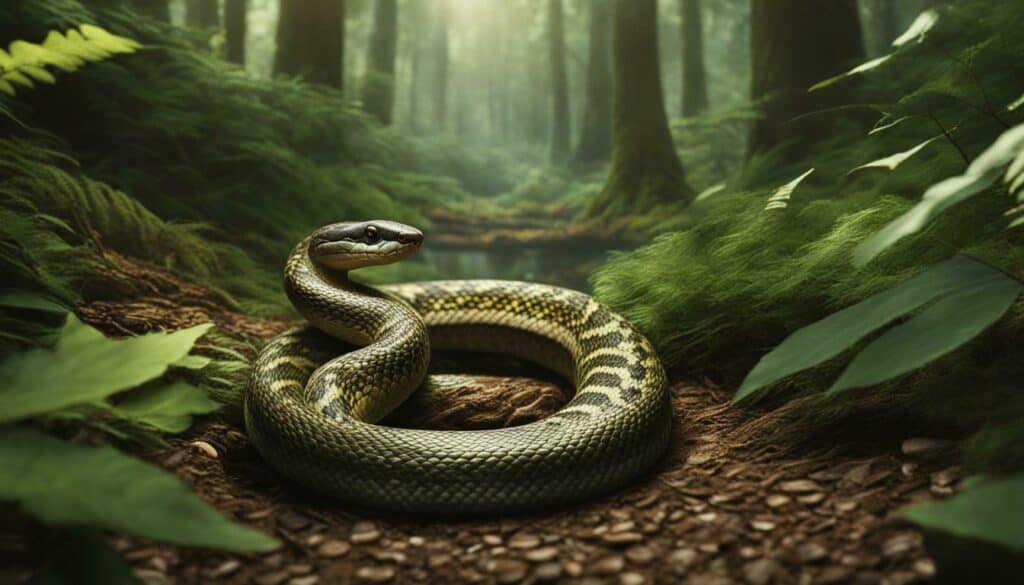
“By studying their behavior, we can ensure that their habitats are protected and that they can continue to thrive in the wild.”
Snakes: Adapted Travelers in Their Ecosystems
In conclusion, while specific data on daily snake travel distances is limited, we can infer that snakes generally do not travel great distances on a daily basis. However, their movements are influenced by various factors, including their habitat range, food availability, and mating behaviors.
Snakes have adapted to travel in their respective ecosystems, whether through gliding in the air or slithering on land. Their unique characteristics and behaviors allow them to thrive in their environments and play important roles in their ecosystems.
Venomous snakes, such as rattlesnakes, Copperheads, and Massasaugas, possess potent venom that aids in immobilizing their prey and ensuring their survival. Coral Snakes and Sidewinders, though less common in Colorado, are also important inhabitants of their respective ecosystems, having adapted to survive in dry and arid environments.
Understanding snake behaviors and characteristics is crucial for coexisting with them and avoiding potentially dangerous encounters. In their ecosystems, snakes play valuable roles in controlling pest populations and maintaining the balance of nature. By appreciating and respecting these fascinating creatures, we can better understand and appreciate the world around us.

Snake Travel Distance and Their Role in the Ecosystem
While snakes may not travel great distances on a daily basis, their movements play an important role in the ecology of their habitats. For example, migrating snakes can transport nutrients and energy between different regions, helping to maintain the delicate balance of ecosystems.
Snakes’ roaming and territorial ranges can also affect the distribution and abundance of prey species, which in turn impacts the behaviors and populations of other animals in the ecosystem. By understanding these complex relationships, we can better appreciate the important role that snakes play in the natural world and work to protect their habitats and populations.
Conclusion
Snakes are fascinating creatures that have adapted to their environments, and understanding their behaviors and characteristics allows us to appreciate their role in the ecosystem. The world of venomous snakes in Colorado is diverse and captivating, from the Western Diamondback Rattlesnake to the Midget Faded Rattlesnake. Even the relatively rare Copperhead and Massasauga have unique characteristics worth noting. Coral Snakes and Sidewinders add a colorful touch to the ecosystem and remind us of the exotic nature of these creatures.
It’s important to exercise caution and admire these snakes from a safe distance, as they are an integral part of the ecosystem. Through studies on snake movement patterns and GPS tracking, we can better understand their daily travel distances and roaming behaviors.
By appreciating the critical role snakes play in their ecosystems, we can continue to explore the natural wonders of Colorado and marvel at the wonders of nature. Remember to be aware and cautious in snake habitats and to treat these magnificent creatures with respect as we coexist in their ecosystem.
FAQ
Q: How far do snakes travel on a daily basis?
A: Snakes generally do not travel great distances on a daily basis. They tend to stay within a range of about 3-5 kilometers for most of their lives.
Q: Do different snake species have different travel distances?
A: Yes, different snake species may have varying travel distances. Some species, such as migrating snakes, may traverse more substantial distances in search of food, to hibernate, or to mate.
Q: Can snakes travel in straight lines?
A: Snakes rarely travel in straight lines when moving at their top speeds, making it challenging to measure their exact speed in motion.
Q: How is snake travel distance measured?
A: Snake travel distance is not easy to measure precisely due to their varying movement patterns and habitats. GPS tracking studies have provided some insights into snake movement, but specific data on daily travel distances is limited.
Q: Are snakes dangerous to humans during their travels?
A: While some snake species are venomous, they generally do not pose a significant threat to humans unless provoked or cornered. It is essential to respect snakes’ space and avoid disturbing them.
